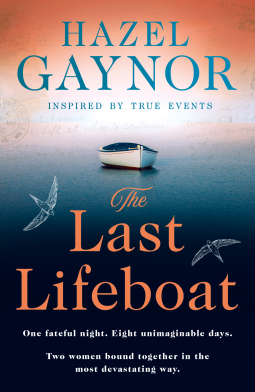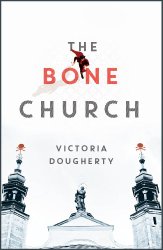What an emotional rollercoaster this book is. I’ve read a lot of fiction set during World War Two but The Last Lifeboat by Hazel Gaynor is a new take on wartime conflict and its effect on ordinary people. Children are being evacuated on ships, sent to safety in Canada, travelling in convoy across the Atlantic where German u-boats wait to attack. When the worst happens, Gaynor asks what does it take to survive? England 1940. After a short first chapter set in the lifeboat immediately after the u-boat attack, the story tracks back four months earlier. Alice King is a schoolteacher-now-librarian in Kent, a quiet job in a quiet place, but she longs to do something with her life. In London, widow Lily Nicholls considers the hard decision to send her two children, Georgie ten and younger brother Arthur, on an evacuation ship to Canada. Invasion threatens and the Blitz is just beginning. Lily struggles with competing fears, that her children may be killed in the bombing expected in London or that having sent them away for their safety they may die en-route or stay in Canada so she will never see them again. Lily is a daily help at a household in Richmond. Her employer Mrs Carr has already sent her two eldest children privately to Canada and the third, Molly, will go as soon as she’s recovered from a horse-riding accident. Deciding to register Georgie and Arthur and decide nearer the time, Lily queues next to a woman who introduces herself as mother of five Ada Fortune.
England 1940. After a short first chapter set in the lifeboat immediately after the u-boat attack, the story tracks back four months earlier. Alice King is a schoolteacher-now-librarian in Kent, a quiet job in a quiet place, but she longs to do something with her life. In London, widow Lily Nicholls considers the hard decision to send her two children, Georgie ten and younger brother Arthur, on an evacuation ship to Canada. Invasion threatens and the Blitz is just beginning. Lily struggles with competing fears, that her children may be killed in the bombing expected in London or that having sent them away for their safety they may die en-route or stay in Canada so she will never see them again. Lily is a daily help at a household in Richmond. Her employer Mrs Carr has already sent her two eldest children privately to Canada and the third, Molly, will go as soon as she’s recovered from a horse-riding accident. Deciding to register Georgie and Arthur and decide nearer the time, Lily queues next to a woman who introduces herself as mother of five Ada Fortune.
When Lily says goodbye to her children, she hands them into the care of ‘Auntie Alice,’ an escort with the Children’s Overseas Reception Board [CORB]. It is Alice’s first journey and she is excited, nervous, and worried about her pregnant sister Kitty left home alone. When the ship is torpedoed at night by a German u-boat there is enormous confusion. It is dark, disorientating, most people are asleep, distress drills forgotten. Alice finds herself the lone woman in a lifeboat of men and seven children, some from her own group, others are strangers. Thirty-five souls.
The story unfolds – and we already know Alice will be adrift in a lifeboat – through the eyes of Alice and Lily. It’s a slow mover at first as the scene is set but after the sinking, both women are waiting. One is hoping for rescue not daring to think of the alternative, the other hopeful then despairing, finally angry. Gaynor is especially good at writing the children, their characters, their influence on the adults, their bravery and ability to look beyond the horrible present up to the stars in the sky.
Inspired by the real life sinking in September 1940 of a vessel carrying ‘seavacuees,’ child refugees, Gaynor has brought new air to a story that made headlines and generated many letters of complaints when it happened, but is unfamiliar today. I’ve not been disappointed by a novel by Hazel Gaynor yet, she’s fast becoming one of my must-read authors.
CLICK HERE TO READ MORE ABOUT THIS BOOK AT AMAZON
Read my review of these other novels by Hazel Gaynor:-
THE BIRD IN THE BAMBOO CAGE
THE COTTINGLEY SECRET
If you like this, try:-
‘The Collaborator’s Daughter’ by Eva Glyn
‘The Garden of Angels’ by David Hewson
‘A Beautiful Spy’ by Rachel Hore
And if you’d like to tweet a link to THIS post, here’s my suggested tweet:
#BookReview THE LAST LIFEBOAT by @HazelGaynor https://wp.me/p2ZHJe-7au via @SandraDanby









 “Somewhere near Venice, Guy began talking with a heavy, elderly man, a refugee from Germany on his way to Trieste. Guy asked questions. The refugee eagerly replied. Neither seemed aware when the train stopped. In the confusion of a newly created war, the train was stopping every twenty minutes or so. Harriet looked out and saw girders, darker than the twilit darkness, holding an upper rail. Between the girders a couple fumbled and struggled, every now and then thrusting a foot or an elbow out into the light that fell from the carriage windows. Beyond the girders water glinted, reflecting the phosphorescent globes lighting the high rail.”
“Somewhere near Venice, Guy began talking with a heavy, elderly man, a refugee from Germany on his way to Trieste. Guy asked questions. The refugee eagerly replied. Neither seemed aware when the train stopped. In the confusion of a newly created war, the train was stopping every twenty minutes or so. Harriet looked out and saw girders, darker than the twilit darkness, holding an upper rail. Between the girders a couple fumbled and struggled, every now and then thrusting a foot or an elbow out into the light that fell from the carriage windows. Beyond the girders water glinted, reflecting the phosphorescent globes lighting the high rail.”